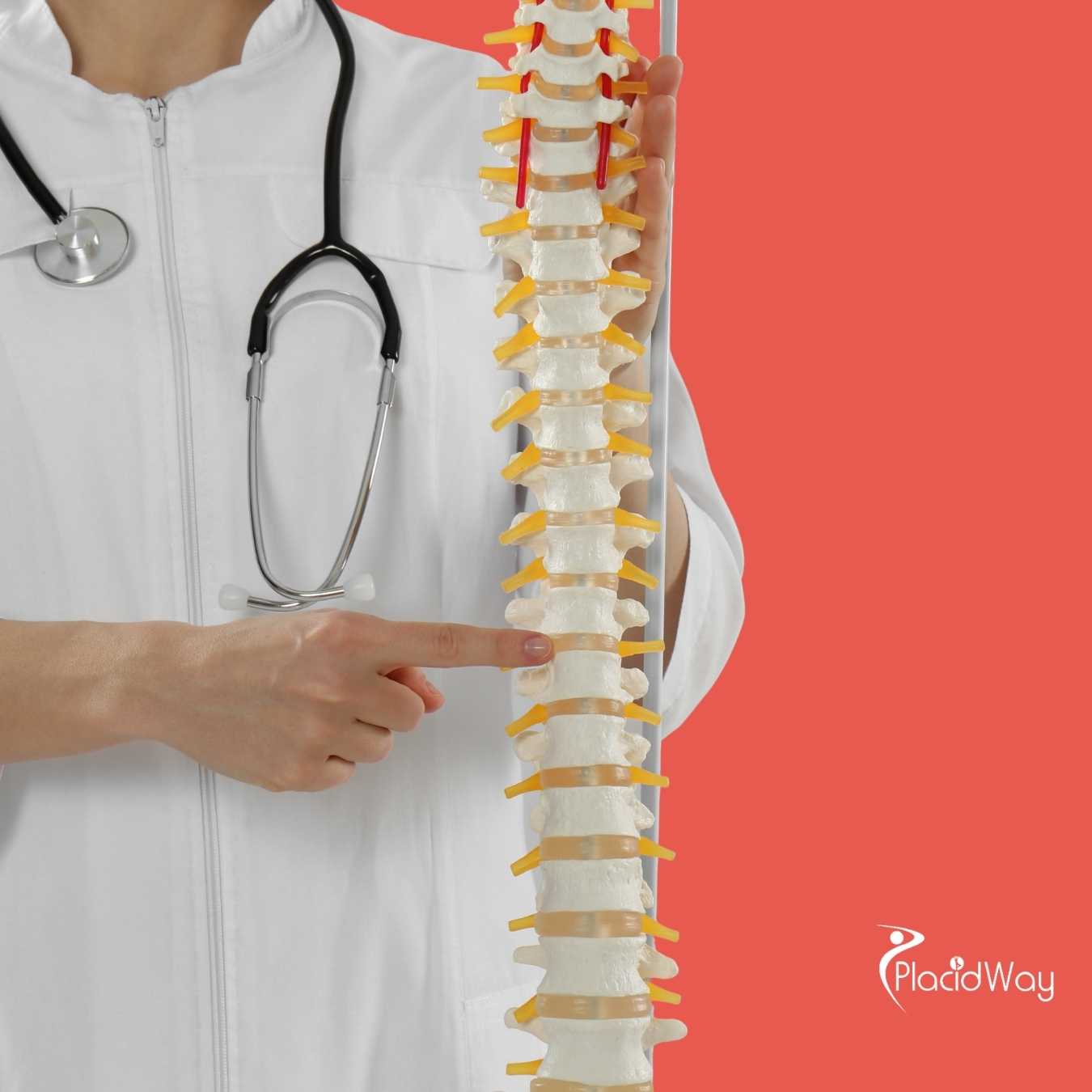Multiple Sclerosis and Stem Cells: Exploring the Possibility of a Cure
.png)
If you or a loved one is living with multiple sclerosis (MS), the search for effective treatments, and ideally a cure, is a constant journey. It's natural to hear about groundbreaking research and wonder if revolutionary options like stem cell therapy could offer the answer. Multiple sclerosis is a complex autoimmune disease affecting millions worldwide, where the immune system mistakenly attacks the protective myelin sheath covering nerve fibers in the brain and spinal cord. This damage disrupts communication between the brain and the rest of the body, leading to a wide range of unpredictable symptoms, from fatigue and numbness to vision problems and mobility issues.
The prospect of using stem cells to treat MS has generated considerable excitement. While it's crucial to understand that stem cell therapy for MS is not yet a cure in the traditional sense, significant advancements have been made. Researchers are actively exploring how different types of stem cells can influence the immune system, repair damaged myelin, and potentially regenerate nerve tissue. Among these, hematopoietic stem cell transplantation (HSCT) has emerged as the most rigorously studied and, for certain patients, a highly effective treatment to halt the aggressive progression of the disease. This blog post aims to provide clear, expert-backed answers to your most pressing questions about stem cells and multiple sclerosis, covering current understanding, effectiveness, risks, and even considerations for seeking treatment abroad.
What is the current understanding of stem cells for multiple sclerosis?
Stem cells are unique cells with the ability to develop into many different cell types and to self-renew. In the context of multiple sclerosis, the goal of using stem cells is multifaceted. One primary approach, HSCT, focuses on "resetting" the immune system. By eliminating the faulty immune cells responsible for attacking the myelin and then replacing them with healthy, self-tolerant immune cells derived from the patient's own hematopoietic stem cells, the aim is to halt the inflammatory processes that drive MS progression. This effectively stops the immune system from damaging the central nervous system.
Beyond immune modulation, other areas of stem cell research for MS involve exploring their potential for repair and regeneration. Mesenchymal stem cells (MSCs), for example, are being investigated for their anti-inflammatory properties and their ability to secrete factors that promote myelin repair and neuronal protection. While these regenerative approaches are still largely experimental, the understanding is evolving rapidly, offering hope for future therapies that might not only stop disease progression but also reverse some existing damage.
Is hematopoietic stem cell transplantation (HSCT) a cure for MS?
While HSCT is a powerful intervention that has shown remarkable results for some individuals with MS, it is not labeled as a "cure." A cure would imply a complete eradication of the disease, with no possibility of recurrence and a full restoration of lost function. HSCT, instead, aims to put the disease into long-term remission, essentially stopping new relapses and preventing further disability progression. Studies have shown that a significant percentage of patients, especially those with early, aggressive relapsing-remitting MS, can experience years without new relapses or new lesions on MRI after HSCT.
The procedure involves high-dose chemotherapy to eliminate the existing immune system, followed by the reintroduction of the patient's own harvested hematopoietic stem cells to rebuild a new, "reset" immune system. This intense treatment carries significant risks, including infection and other serious complications, which is why it is typically reserved for patients who have not responded to conventional **disease-modifying therapies** and have aggressive disease activity. Its effectiveness in halting the disease is well-documented, making it a critical area of focus in MS treatment, even if the term "cure" remains elusive.
What types of stem cell therapy are used for multiple sclerosis?
When we talk about stem cell therapy for MS, it's important to distinguish between the various types. The most established and researched approach is autologous hematopoietic stem cell transplantation (AHSCT). In this procedure, the patient's own blood-forming (hematopoietic) stem cells are collected before high-dose chemotherapy is administered. The chemotherapy eliminates the faulty immune system, and then the stored stem cells are returned to the patient to rebuild a healthy, new immune system that no longer attacks the central nervous system.
Other types of stem cell therapies are in various stages of research and are generally considered experimental outside of clinical trials. These include:
- Mesenchymal Stem Cell (MSC) Therapy: MSCs, often derived from bone marrow or fat tissue, are being investigated for their immunomodulatory and neuroprotective properties. They are thought to help reduce inflammation and promote tissue repair. However, robust clinical trial evidence for their widespread use in MS is still developing.
- Neural Stem Cell (NSC) Therapy: NSCs are cells that can differentiate into various neural cells, including neurons, astrocytes, and oligodendrocytes (which produce myelin). This therapy aims to replace damaged cells and promote myelin repair directly. This is currently in early-stage research.
It's critical for patients to be aware of the distinction and to only consider treatments supported by strong clinical evidence and conducted within regulated medical environments.
Who is a suitable candidate for HSCT in MS treatment?
Deciding if someone is a candidate for HSCT is a rigorous process involving a multidisciplinary team of specialists. This intensive procedure is not for everyone due to its significant risks. The ideal candidate profile usually includes:
- Diagnosis: Patients with highly active relapsing-remitting MS (RRMS), often with a history of frequent relapses and/or significant disability progression despite being on conventional disease-modifying therapies (DMTs).
- Disease Activity: Evidence of ongoing inflammatory activity, such as new lesions on MRI scans.
- Age and General Health: Younger patients (typically under 50-55) are generally preferred, and candidates must be in good overall physical health, with no significant comorbidities (e.g., severe heart, lung, or kidney disease) that would increase the risks associated with high-dose chemotherapy and the transplant process.
- Disability Level: While not a strict rule, patients with lower levels of accumulated disability (e.g., EDSS score typically below 6.5) often see better outcomes, as the therapy is more effective at preventing future damage than reversing extensive pre-existing damage.
A thorough evaluation, including cardiac function tests, lung function tests, and infectious disease screening, is essential to ensure patient safety and optimize outcomes.
What are the risks and side effects of stem cell therapy for MS?
Given the intensity of the chemotherapy involved, HSCT for MS carries significant risks and side effects. It's a demanding procedure that requires a prolonged hospital stay and careful monitoring. Patients can expect both short-term and potential long-term complications:
Short-term Risks and Side Effects (during and immediately after transplantation):
- Infections: The most common and serious risk. With a suppressed immune system, patients are highly vulnerable to bacterial, viral, and fungal infections, which can be life-threatening.
- Chemotherapy-related toxicities: These can include severe nausea, vomiting, hair loss, mucositis (mouth sores), fatigue, and effects on other organs like the heart or kidneys.
- Low Blood Counts: Pancytopenia (low red blood cells, white blood cells, and platelets) is expected, requiring transfusions and increasing the risk of bleeding.
- Graft-versus-Host Disease (GVHD): While less common in autologous transplants (using the patient's own cells), it can occur.
Long-term Risks and Side Effects:
- Infertility: Chemotherapy can damage reproductive organs, often leading to permanent infertility. Patients are usually offered fertility preservation options before treatment.
- Secondary Malignancies: A very small but increased risk of developing certain cancers, such as leukemia, years after treatment.
- Organ Damage: Potential for long-term damage to organs like the thyroid, lungs, or heart, which requires ongoing monitoring.
The decision to undergo HSCT involves a careful weighing of these risks against the potential benefits of halting MS progression, making patient selection and comprehensive pre-treatment evaluation absolutely crucial.
How effective is stem cell treatment in halting MS progression?
The effectiveness of HSCT in stopping MS progression is well-supported by robust clinical trials and long-term follow-up studies. For carefully selected patients, particularly those with aggressive relapsing-remitting MS who have failed other treatments, the results can be transformative. The primary goal is to achieve "No Evidence of Disease Activity" (NEDA), meaning no relapses, no new or enlarging lesions on MRI, and no confirmed disability progression.
Key findings regarding effectiveness include:
- Relapse Reduction: Studies like the MIST trial have shown that HSCT can reduce annual relapse rates by as much as 90-95% compared to conventional disease-modifying therapies.
- Disability Progression: A significant proportion of patients experience an arrest of disability progression, and some may even see modest improvements in neurological function.
- Long-term Remission: Many patients achieve long-term remission, with some remaining free of disease activity for a decade or more post-transplant.
It's important to reiterate that while effective at halting the disease, HSCT primarily prevents future damage rather than reversing extensive, pre-existing neurological deficits. Therefore, timing and patient selection are crucial for maximizing the benefits of this potent stem cell treatment.
What is the cost of stem cell therapy for multiple sclerosis internationally?
For many patients, the cost of stem cell therapy for MS, particularly HSCT, is a significant consideration. In countries like the United States, the cost can be extremely high, often exceeding $150,000 to $200,000, and insurance coverage can be complex and limited. This often drives patients to explore international options, commonly referred to as medical tourism, where the same high-quality treatments may be available at a fraction of the price.
The variation in cost is due to several factors:
- Healthcare System: Differences in healthcare infrastructure, labor costs, and pharmaceutical pricing contribute to varied treatment costs across countries.
- Clinic Reputation and Services: Highly specialized clinics with extensive experience and state-of-the-art facilities may charge more.
- Inclusions: Some international packages might include pre-treatment assessments, the procedure itself, post-procedure care, accommodation, and even translation services, influencing the final price.
Patients considering medical tourism for MS stem cell therapy should always request a detailed breakdown of all costs involved to avoid hidden fees and ensure comprehensive care.
Which countries are popular for MS stem cell treatment via medical tourism?
Due to the high costs and sometimes strict eligibility requirements in their home countries, many patients with multiple sclerosis look to international destinations for stem cell treatment. These countries have established reputable clinics and hospitals that specialize in procedures like HSCT for MS, drawing patients globally.
Some of the frequently chosen destinations for MS stem cell treatment include:
- Mexico: Several clinics in Mexico offer HSCT protocols for MS patients, often at a more accessible price point compared to the US. They sometimes have slightly different eligibility criteria, attracting a broader range of patients.
- Russia: Clinics in Russia have been pioneers in HSCT for MS for many years and have extensive experience, attracting patients looking for established expertise.
- Poland: European options like Poland also offer HSCT programs for MS, providing quality care within the EU regulatory framework and often at competitive prices.
- Israel: Known for its advanced medical research and technology, Israel also has facilities that offer specialized stem cell therapies for various conditions, including MS.
It is crucial for patients to thoroughly research any international clinic, ensuring it is accredited, has experienced medical staff, and follows evidence-based protocols consistent with international medical standards.
What should patients consider when choosing a clinic abroad for MS stem cell therapy?
Opting for medical tourism for a complex procedure like HSCT for MS requires careful consideration and due diligence. It's not just about the cost savings; it's about ensuring safety and receiving effective, reputable care. Here are key factors to consider:
| Consideration | Details for MS Stem Cell Therapy |
|---|---|
| Accreditation & Regulation | Verify if the clinic is internationally accredited (e.g., JCI, ISO) and regulated by a recognized medical authority. This ensures adherence to quality and safety standards for stem cell treatments. |
| Medical Team's Expertise | Research the qualifications and experience of the neurologists and hematologists. Ensure they have significant experience specifically with HSCT for MS, not just general stem cell applications. |
| Treatment Protocol | Ask for detailed information on the specific HSCT protocol used (e.g., type and dosage of chemotherapy), pre-treatment evaluations, and post-transplant care. Compare it with recognized international guidelines. |
| Transparency of Costs | Obtain a comprehensive cost breakdown that includes all aspects: consultations, tests, chemotherapy, hospital stay, medications, and follow-up care. Clarify what is and isn't included. |
| Post-Treatment Care & Follow-up | Understand the plan for long-term monitoring and follow-up care, both while abroad and once you return home. This is crucial for managing potential complications and tracking disease activity after stem cell therapy. |
| Language & Support | Ensure there are adequate language support and patient coordination services to facilitate communication and logistics throughout your journey. |
Thorough research and possibly consulting with an independent neurologist familiar with HSCT are highly recommended before making a decision.
What does the future hold for stem cell research in multiple sclerosis?
The field of stem cell research for multiple sclerosis is dynamic and rapidly advancing, holding immense promise for future breakthroughs. While HSCT has proven its ability to halt aggressive MS, ongoing research aims to refine and improve existing therapies and explore entirely new avenues.
Key areas of future focus include:
- Improving HSCT Safety and Accessibility: Researchers are investigating less intensive chemotherapy regimens to reduce the risks and side effects of HSCT, potentially making it accessible to a broader range of patients.
- Regenerative Therapies: Significant effort is being directed toward harnessing the regenerative potential of stem cells, particularly mesenchymal stem cells (MSCs) and neural precursor cells. The goal is to develop therapies that can not only stop immune attacks but also repair damaged myelin and promote neuroprotection, potentially reversing some of the neurological deficits experienced by patients.
- Targeted Delivery: Exploring methods to deliver stem cells more precisely to areas of damage in the central nervous system to maximize their therapeutic effect.
- Personalized Medicine: Moving towards tailoring stem cell treatments based on an individual patient's unique genetic profile and disease characteristics to optimize outcomes.
The journey to a definitive cure for multiple sclerosis continues, but the ongoing advancements in stem cell research offer significant hope for more effective, safer, and potentially restorative treatments in the years to come.
If you're exploring options for multiple sclerosis treatment or other specialized healthcare services, especially through medical tourism, PlacidWay can connect you with accredited clinics and experienced specialists worldwide. Visit PlacidWay to learn more about comprehensive solutions tailored to your healthcare needs.


.png)



-Package-in-Kuala-Lumpur,-Malaysia-by-FirstCell.jpg)





Share this listing